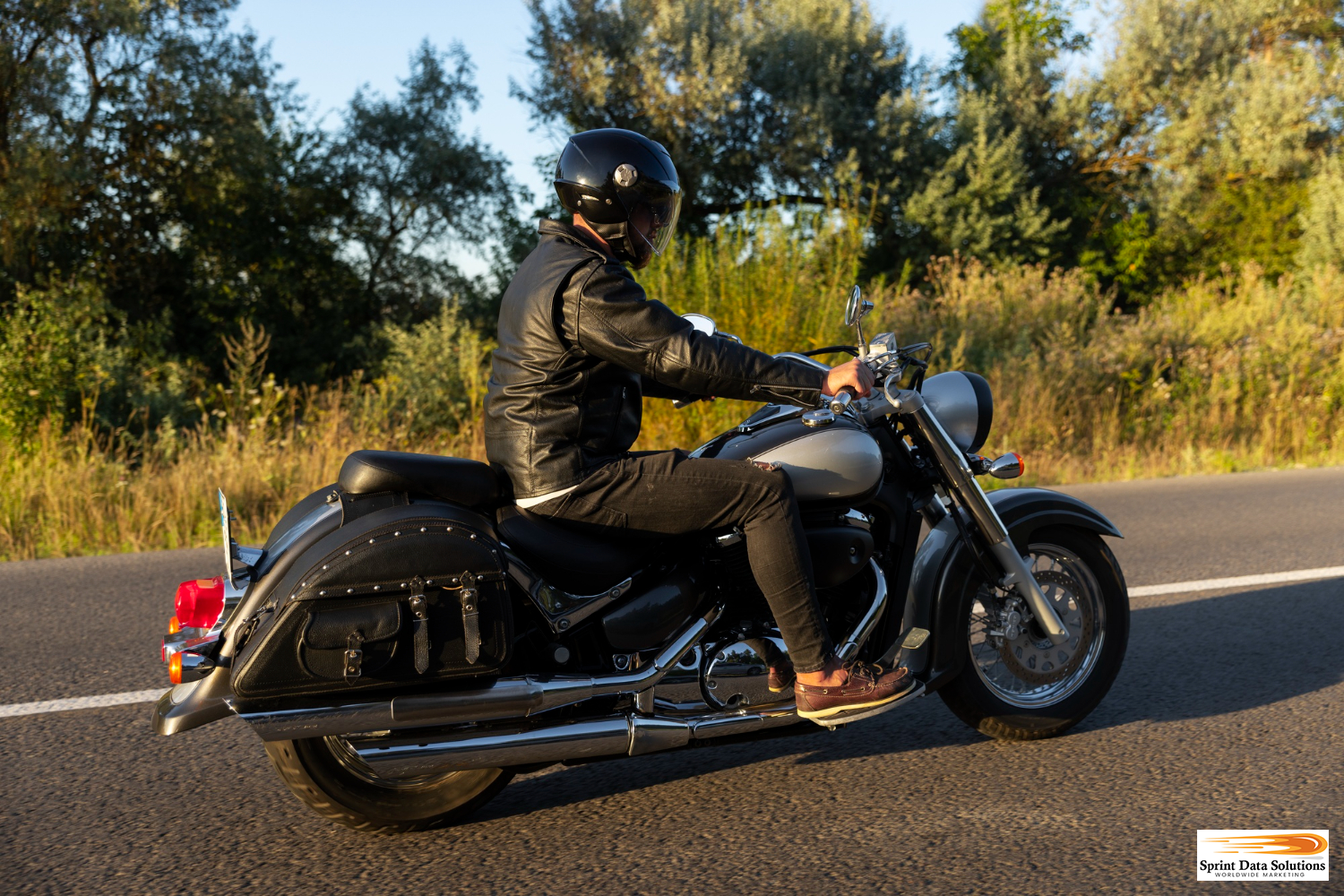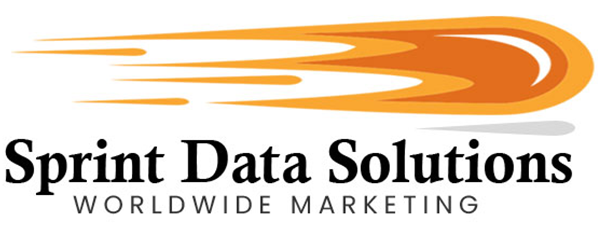Trike Owners Are A New & Growing Market
America, with its relatively young history, has been able to adapt to the evolving demands of its people in ways that older nations might struggle to match. This adaptability is evident in the development of the nation’s vast and intricate transportation infrastructure. The United States boasts one of the most expansive highway systems in the world, facilitating everything from daily commutes to long-distance road trips. The growth and expansion of this network, particularly the interstate system, has been a key enabler of the American dream of mobility and exploration, ensuring that people can travel freely across vast distances. Among the vehicles that symbolize this freedom, none is more iconic than the motorcycle. For decades, motorcycles have epitomized the spirit of adventure, personal freedom, and the open road.
However, the motorcycle’s dominance in the American transportation landscape has been met with new competition from an innovative and rapidly growing alternative: the trike motorcycle. The trike offers an appealing blend of the thrill and freedom associated with motorcycling while providing more stability and comfort, making it an attractive option for a wider demographic. As this market continues to expand, it introduces businesses to a new audience, one that values both adventure and convenience, but also requires different products and services tailored to their unique needs. Sprint Data Solutions Worldwide Marketing has recognized this shift in consumer demand and has already positioned itself to assist businesses in tapping into this emerging and dynamic market, ensuring that they are equipped to provide for the diverse preferences of modern riders. By leveraging advanced marketing strategies and insights, Sprint Data Solutions is helping businesses bridge the gap between traditional motorcycle enthusiasts and this new wave of trike owners.

What Is A Trike Motorcycle?
A trike motorcycle, often referred to as a “motorized tricycle,” is a vehicle that combines the core structure of a traditional motorcycle with the stability and handling benefits of an additional wheel. Unlike standard motorcycles, which operate on two wheels, trike motorcycles feature three, providing increased stability, especially for riders who may have balance concerns or who simply prefer a different riding experience. There are two primary configurations for trikes: one with two wheels at the front and one in the rear, known as a “reverse trike,” and the other, more commonly seen, with two wheels at the rear and one in the front, resembling the traditional motorcycle shape with the added support of an extra wheel. The design choices often depend on manufacturer preferences, engineering constraints, and specific customer requirements.
The idea of a trike motorcycle isn’t a modern innovation but rather a return to an older concept. As far back as the late 19th century, inventors and engineers were experimenting with various forms of motorized vehicles, and some of the earliest prototypes featured three wheels. These early trike configurations were among the many that laid the groundwork for the motor vehicle industry, which eventually evolved into the more familiar two-wheeled and four-wheeled vehicles seen today. Despite these early attempts, the motorcycle industry remained primarily focused on two-wheeled designs for much of the 20th century, relegating the trike to the fringes of motorcycle culture.
However, in the early 2000s, a growing number of motorcycle enthusiasts, particularly those looking for an alternative to traditional motorcycles, began seeking out custom modifications to convert their two-wheeled motorcycles into trikes. These “motor trike” conversion kits gained significant popularity, as they allowed motorcycle owners to retain the power and speed of a traditional bike while offering the added stability and comfort of three wheels. This growing trend caught the attention of major motorcycle manufacturers, and in 2009, Harley-Davidson, one of the most iconic brands in the motorcycle industry, released its own factory-produced trike model. This official move signaled the mainstream acceptance of the motorcycle trike, which, until then, had largely been the domain of small custom shops.
As more manufacturers, including Indian Motorcycles, Can-Am, and others, entered the market, the trike segment grew rapidly, offering a wider range of options for riders. Today, while motorcycles remain the dominant form of two-wheeled transportation, trikes have carved out a niche market, driven by several key factors. These include enhanced safety, especially for riders with physical limitations or those who desire a more stable and comfortable riding experience; the appeal of a unique, custom vehicle; and the desire for a motorcycle experience without the challenges of balancing a two-wheeled bike. As technology and manufacturing processes continue to evolve, the trike motorcycle sector is expected to expand further, attracting new riders and offering greater versatility in design and functionality.
The Trike Difference
Trike motorcycles, as the name suggests, follow a similar design to traditional two-wheeled motorcycles but are distinguished by their three-wheel configuration. This added wheel allows for a different riding experience, with stability and balance being significant advantages for many riders. The configuration can vary depending on the model and rider preferences, with some trikes having two wheels in the front and one at the back, while others feature one wheel in the front and two at the rear. This three-wheel setup is typically considered an ideal middle ground for individuals who appreciate the thrill of motorcycling but prefer extra stability due to physical constraints or a desire for more comfort.
The concept of the motorized tricycle is not a new one, as the earliest examples can be traced back to the late 19th century, when various motorized and non-motorized tricycles were experimented with. At this time, inventors and engineers were exploring a wide array of vehicle configurations, trying to find the optimal design for practical use. However, as the automotive industry evolved, the two-wheeled motorcycle and the four-wheeled automobile eventually became the dominant forms of motor vehicles, pushing trikes into niche markets for much of the 20th century.
The trend of motorcycle trikes saw a resurgence in the early 21st century, particularly in the United States, where many motorcycle enthusiasts began converting their own motorcycles into three-wheeled versions. These custom conversions gained considerable popularity, especially among older riders who found that the added stability of three wheels made for a more comfortable and secure riding experience. As demand for these vehicles increased, Harley-Davidson made a bold move in 2009 by launching its own mass-produced trike model, the Harley-Davidson Tri Glide Ultra Classic. This marked a significant shift in the motorcycle industry, with major manufacturers recognizing the market potential for these vehicles.
Following Harley-Davidson’s lead, other motorcycle brands began producing their own trikes, further solidifying their presence in the motorcycle market. Today, while traditional two-wheeled motorcycles remain the most popular choice, trikes continue to carve out their own niche, appealing to a diverse group of riders. These vehicles offer a unique blend of motorcycle culture with the added comfort and stability of a three-wheeled design, making them an attractive option for riders seeking a blend of adventure and practicality. The growing popularity of trikes is also tied to advances in design and technology, as modern trikes are often equipped with enhanced safety features, improved suspension systems, and greater overall comfort, making them a compelling choice for an expanding segment of the riding population.
Who Is The Market?
The demographic of people who use trikes shares many similarities with those who ride motorcycles, and there is a significant overlap between the two groups. Both motorcycle and trike riders are often attracted to the sense of freedom, adventure, and the open road. However, trikes also appeal to a broader audience, including individuals who might find motorcycles less accessible or comfortable. This includes older adults, those with physical limitations, or people seeking more stability without sacrificing the thrill of riding. The trike market is expanding beyond traditional motorcyclists, reaching individuals who want an alternative to cars but find a two-wheeled motorcycle intimidating or impractical. This shift opens up new opportunities, with manufacturers adapting designs to cater to a variety of riders, from those seeking a leisurely experience to those still craving a sense of excitement and adventure. Chief among trike users are:
Elderly Riders
The market for trikes, originally catering primarily to motorcycle enthusiasts, continues to thrive and has even expanded in recent years. Motorcycles have long been ingrained in American culture, with many riders embracing them as a symbol of freedom and adventure. Over time, however, age inevitably brings physical limitations, and for some, the traditional motorcycle becomes harder to handle due to the physical demands of balancing, counter steering, and handling the weight of the bike. This is where trikes come into play—offering a perfect solution for those who want to continue enjoying the exhilaration of motorcycle riding without the challenges posed by balance. Trikes eliminate the need for the skill of keeping the bike upright, making them an excellent choice for seniors or individuals with mobility issues.
As the aging population grows, so too does the demand for motorcycles that cater to these new needs. Many seniors who have ridden motorcycles for decades are reluctant to give up the thrill and sense of freedom that motorcycling offers. Trikes meet this demand by providing a stable, comfortable alternative. In fact, the growing senior market presents a wealth of opportunities for businesses, from manufacturers of trike models designed with ergonomic features to services that cater specifically to older riders. These may include custom modifications, enhanced safety features, and even training programs tailored to seniors transitioning from traditional motorcycles to three-wheeled vehicles. Furthermore, the desire to maintain an active and fulfilling lifestyle has led to a rise in motorcycle clubs and social groups specifically for older riders, offering a community of like-minded individuals who share a passion for the open road. This shift in the market highlights a unique intersection of mobility, independence, and social engagement, creating a vibrant niche that has substantial potential for growth.

Disabled Riders
For individuals with certain disabilities, driving a conventional vehicle can be a challenging or impossible task, particularly in the case of conditions like blindness. However, for those with mobility challenges, such as wheelchair users or individuals who have lost a limb, vehicles can still offer a means of independent transportation, albeit with adaptations to accommodate their needs. Motorcycles, while offering freedom and an exhilarating experience, present even greater demands on riders due to the necessity of balance and complex maneuvering. This is where motor trikes come in, offering a solution that enables people with disabilities to experience the joys of motorcycling while mitigating the physical demands.
Motor trikes, often seen as a more stable alternative to two-wheeled motorcycles, provide crucial benefits for people with disabilities. Unlike traditional motorcycles, they do not require the rider to manually balance the vehicle, making them a viable option for individuals with limited mobility or those who use prosthetic limbs. The added stability of the third wheel eliminates the need for countersteering—a technique essential for turning on two-wheeled motorcycles—thus simplifying the riding experience. This makes trikes particularly appealing for amputees, people with paralysis, and those with other conditions that may impair their physical abilities but still allow them to operate a vehicle with proper accommodations.
In addition to enhanced stability, trikes can be highly customized to suit the unique needs of riders with disabilities. Many models allow for modifications where controls such as clutch engagement, gear shifting, braking, and throttle control can be moved to the handlebars, making the vehicle more accessible for riders who may not be able to use their feet or legs in the traditional manner. Such customizations can provide a level of independence that is often otherwise unavailable to people with mobility impairments. Whether it’s for a disabled veteran, someone with spinal cord injuries, or anyone who requires specific accommodations, motor trikes can provide not just transportation, but a sense of freedom and mobility that is critical for maintaining a high quality of life. Ultimately, these vehicles bridge the gap between those with physical disabilities and the liberating experience of motorcycle riding, offering a dynamic blend of accessibility, independence, and joy.
People Who Don’t Like Motorcycles
The motor trike market has recently experienced a noteworthy shift, with a growing number of riders who might never have considered traditional motorcycles, but find motor trikes a more appealing alternative. The appeal of motorcycles has often been limited by the high skill level and perceived risk involved in operating them, which deters many potential riders. However, motor trikes offer a solution by providing greater stability and safety, addressing concerns about balancing and handling that many new riders find intimidating. In fact, certain trike models are designed with features that resemble those of small cars, such as full-sized seats and steering wheels, effectively transforming them into three-wheeled versions of convertible cars. These trikes require only a motorcycle license rather than a standard car driving license, which broadens their accessibility and attracts a different group of potential customers.
This shift in the target demographic presents an exciting opportunity for businesses to expand their reach. Traditionally, motorcycle enthusiasts are often characterized by their interest in speed, power, and the thrill of the ride, but with the introduction of motor trikes, the audience now includes individuals who prioritize comfort, safety, and ease of use. This diverse customer base opens up new avenues for marketing and sales, allowing companies to tailor their offerings to a wider range of consumer preferences. Additionally, the rise in popularity of motor trikes suggests that people are increasingly looking for alternatives that combine the freedom and open-air experience of motorcycling with the stability and user-friendliness of automobiles. This is where Sprint Data Solutions Worldwide Marketing can play a crucial role, leveraging its expertise in targeted marketing strategies to help brands tap into this expanding market, attract new riders, and position their products effectively within this growing segment. By analyzing consumer behavior and understanding the preferences of this new wave of riders, Sprint Data Solutions can drive innovation and help companies seize the opportunities that lie in the evolving motor trike industry.
Who Is Sprint Data Solutions Worldwide Marketing?
Sprint Data Solutions Worldwide Marketing is a prominent American-owned business that has evolved from the ambitious vision of a disabled veteran seeking to make a difference in the world. After transitioning from a defense-focused career to civilian life, the founder set out to create a company that would stimulate economic growth and support the success of American businesses. From its humble beginnings in Las Vegas, Nevada, the company has grown into a well-established leader in the marketing sector, now boasting a highly skilled team with a collective experience of over 50 years.
The company’s journey began during a time when digital marketing was not yet the widespread force it is today. Traditional marketing platforms such as radio, television, and print media were dominant, and Sprint Data Solutions recognized the need to find innovative ways to help businesses reach their customers effectively. The company’s initial focus on direct mail marketing allowed it to develop expertise in crucial areas such as database management, customer segmentation, and analytics, which would later play a pivotal role in its transition to the digital marketing space.
As digital marketing began to take shape and grow in influence, Sprint Data Solutions was quick to adapt, positioning itself as an early mover in this burgeoning field. By incorporating digital marketing into its service offerings, the company was able to provide its clients with advanced solutions that maximized their online visibility and drove customer engagement. This foresight and flexibility helped the company secure a strong position in the competitive marketing industry, building a reputation for innovation and exceptional service.
Initially, Sprint Data Solutions’ services were focused exclusively within Nevada. However, the company’s growing success led to expanded operations, covering not only the entire United States but also extending its reach to Alaska and Hawaii. As the company’s expertise in digital marketing grew, it expanded its geographic coverage to include Canada and Mexico, providing North American clients with the tools they needed to thrive in their markets. The company’s global ambitions didn’t stop there; it also established a presence in Europe, giving its clients access to valuable international markets, including France.
Today, Sprint Data Solutions Worldwide Marketing has become a trusted partner for businesses across North America and Europe, leveraging its decades of experience to offer innovative marketing solutions. By continuously embracing new technologies and adapting to the ever-evolving digital landscape, Sprint Data Solutions remains at the forefront of the marketing industry, helping businesses from a variety of sectors build their brands and achieve their growth objectives in an increasingly interconnected world.

How We Can Help
Sprint Data Solutions Worldwide Marketing is an American-owned company that stands as a testament to the resilience, adaptability, and innovative spirit of its founder, a disabled veteran. His vision of creating a business that would not only stimulate economic growth but also serve the broader mission of empowering American businesses has been the driving force behind the company’s growth and success. What started as a humble venture in Las Vegas, Nevada, has blossomed into a global leader in the marketing industry, with a team that boasts over 50 years of collective experience.
The origins of Sprint Data Solutions are rooted in a time when traditional marketing methods, such as radio, print, and television, were the dominant forces in the industry. The founder, seeing the winds of change on the horizon, recognized the untapped potential of digital marketing and the shift toward data-driven strategies. Initially focusing on direct mail marketing, the company excelled in database management, customer segmentation, and analytics—skills that would lay the foundation for its expansion into the digital realm. This ability to leverage data and target audiences effectively would set Sprint Data Solutions apart from its competitors in the early days of digital marketing.
As digital platforms began to evolve and reshape the landscape of advertising, Sprint Data Solutions was quick to integrate these new technologies into its offerings. The company’s foresight in adopting digital marketing strategies allowed it to provide clients with innovative solutions that maximized their online visibility and enhanced customer engagement. This adaptability played a crucial role in establishing the company’s reputation as a leader in marketing innovation. Their proactive approach to technological advancements ensured that they stayed ahead of the curve and maintained a competitive edge in an ever-changing industry.
Initially serving clients within Nevada, Sprint Data Solutions’ success quickly prompted expansion into other regions, starting with the broader United States. As its services became increasingly sought after, the company extended its reach to include Alaska, Hawaii, Canada, and Mexico, catering to a diverse range of clients across North America. The company’s growth was not limited to North American borders; its international ambitions saw it establishing a presence in Europe, specifically in France, enabling it to provide a global suite of marketing solutions to its clients. This expansion reflects the company’s commitment to supporting businesses in a rapidly globalizing marketplace, where cross-border digital marketing has become increasingly vital to success.
Today, Sprint Data Solutions Worldwide Marketing is a respected name in the marketing industry, known for its commitment to delivering cutting-edge solutions and driving measurable results. The company’s continuous adaptation to the evolving digital landscape and its strategic use of emerging technologies allow it to provide businesses with the tools and insights necessary to thrive in a competitive environment. From small local businesses to large multinational corporations, Sprint Data Solutions is proud to be a trusted partner, helping organizations build their brands, engage customers, and achieve sustained growth across multiple sectors in both established and emerging markets worldwide.
Contact Formats & More
Sprint Data Solutions Worldwide Marketing provides a wide range of client-focused solutions designed to meet the specific needs of businesses seeking to connect with their target audience. Our services offer customizable contact lists in formats tailored to the client’s preferences, ensuring businesses can effectively reach out to both consumers and businesses alike. Whether you’re working with residential or B2B data, we provide comprehensive contact details, including physical mailing addresses, email addresses, and telephone numbers. This allows businesses to build personalized marketing strategies for both individual consumers and corporate entities.
Our residential database is enriched with accurate contact information, ensuring that businesses can target specific demographics for direct mail campaigns. On the B2B side, we specialize in providing key decision-makers’ contact details, moving beyond generic receptionist numbers to put you in touch with the right people who can drive business forward. Additionally, our database includes cellular phone numbers, allowing businesses to leverage text/SMS marketing for more immediate, engaging, and direct communication with potential clients.
For those companies looking to streamline their marketing efforts, Sprint Data Solutions Worldwide Marketing goes the extra mile with our specialized hands-on services. We understand that not all businesses have the internal resources or expertise to manage marketing campaigns efficiently. To address this, we offer a turnkey direct mail solution that guides clients through every stage of the direct mail process, from initial concept creation to print and distribution. This end-to-end service eliminates the need for clients to juggle multiple vendors and ensures the entire process is managed under one roof, providing seamless integration and professional results.
If your business is focused on reaching niche audiences, such as trike owners, we have the right leads to help you make those connections. With our expertise and extensive contact database, Sprint Data Solutions Worldwide Marketing empowers businesses to maximize their marketing potential, increase outreach, and ultimately drive more meaningful results. Let us help you transform your marketing efforts into tangible success.






